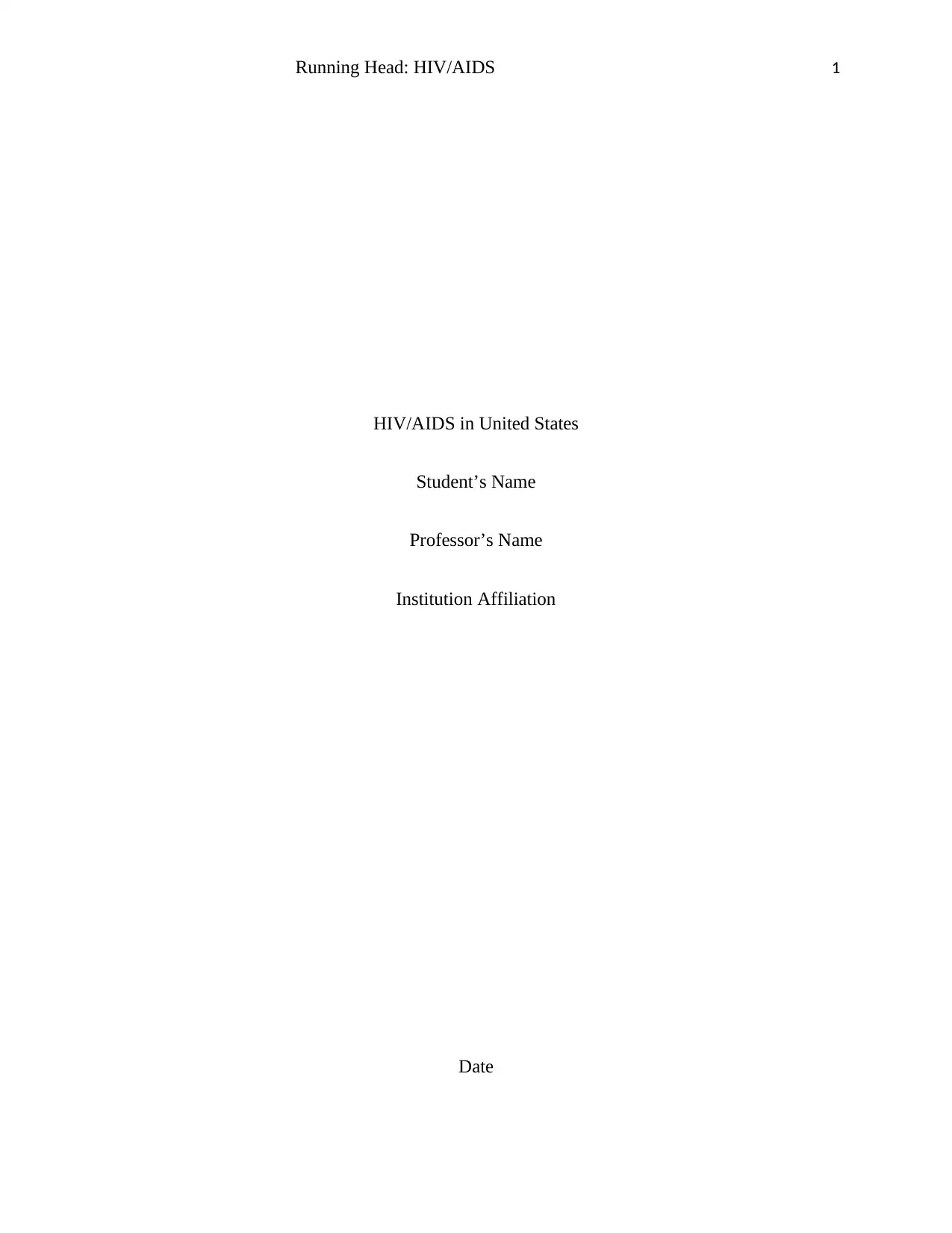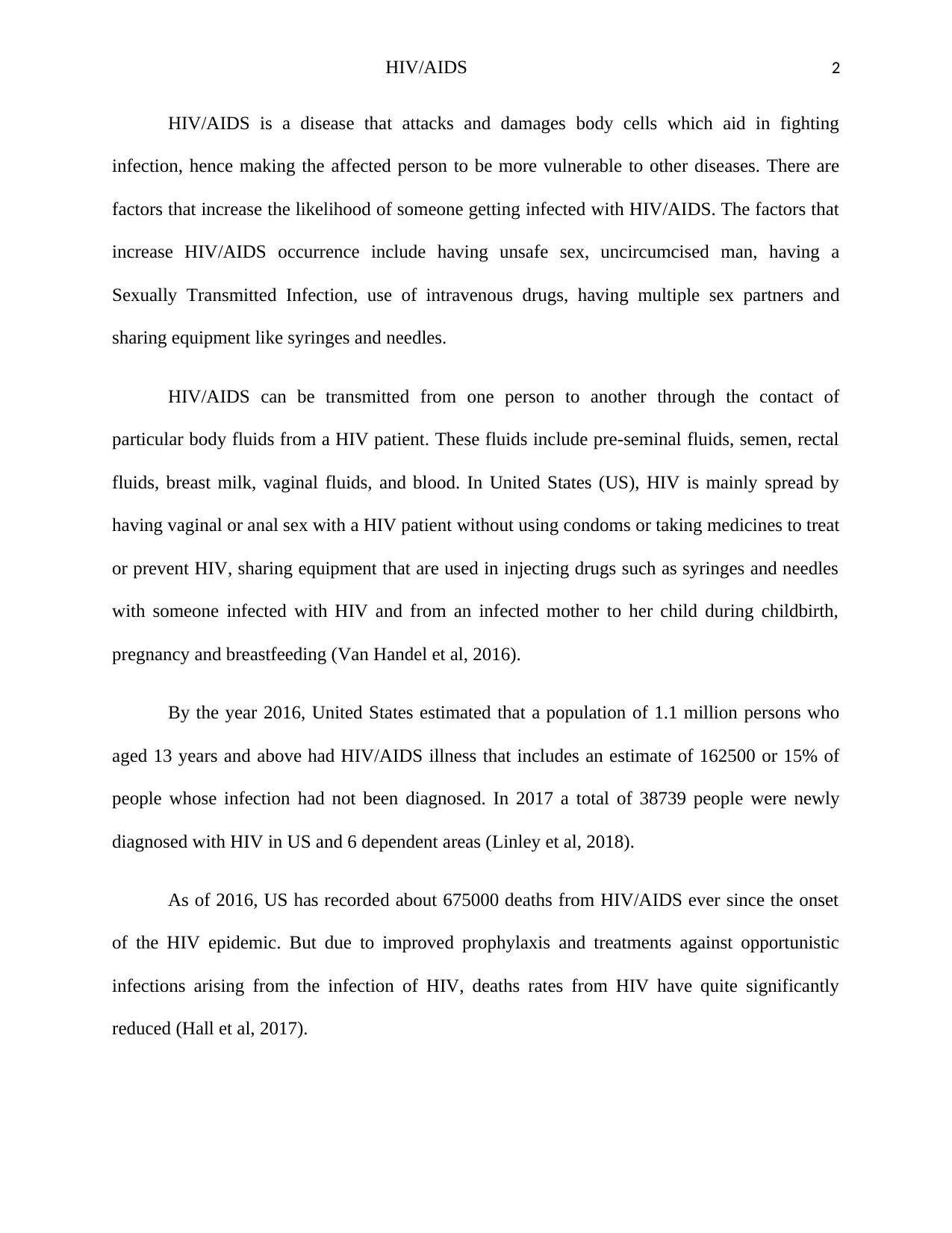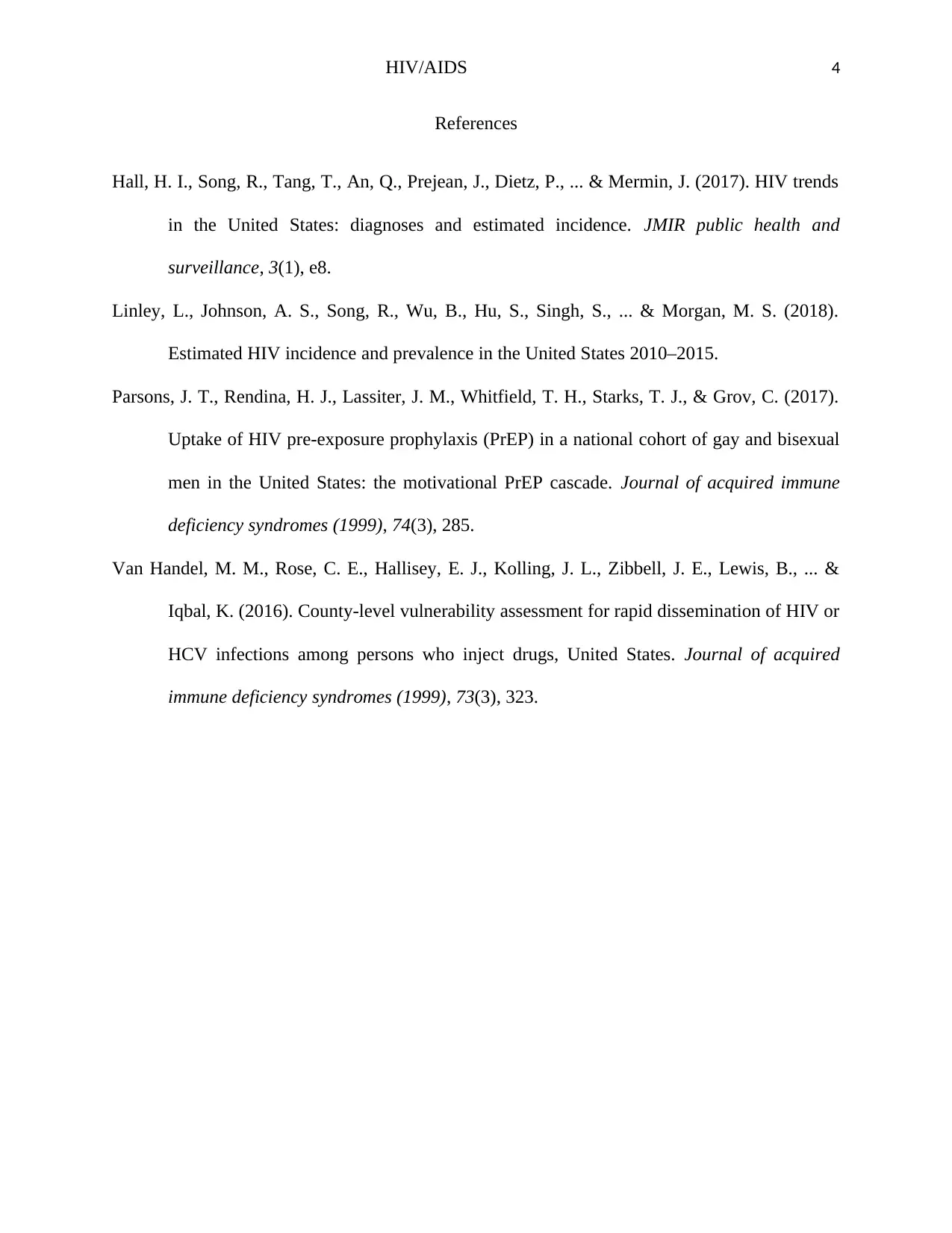HIV/AIDS in the US: Risk Factors, Transmission, and Statistics
VerifiedAdded on 2022/10/15
|4
|674
|21
Report
AI Summary
This report provides an overview of HIV/AIDS in the United States, focusing on prevalence, transmission methods, and risk factors. It highlights that HIV/AIDS attacks and damages body cells, making individuals more vulnerable to other diseases. The report details factors that increase the likelihood of HIV/AIDS infection, including unsafe sex, intravenous drug use, and sharing equipment. It also presents statistics on the number of people in the US living with HIV/AIDS, new diagnoses, and deaths, while emphasizing the impact of improved treatments. The report further specifies that gays and bisexual men are among the highest-risk groups. The report references several studies and articles to support the information provided. This report is available on Desklib, a platform that offers study resources like past papers and solved assignments to help students excel in their studies.
1 out of 4





![[object Object]](/_next/static/media/star-bottom.7253800d.svg)